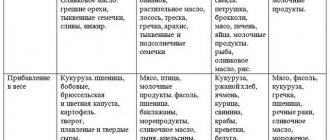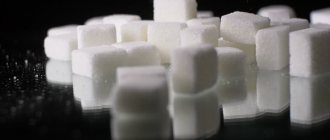As summer approaches, many women dream of losing extra pounds and torment themselves with grueling diets. The best option is to give up carbohydrates to some extent and switch to a protein diet. Protein is a building material for muscle tissue; it enters the body along with foods and is broken down into the necessary amino acids during digestion. It is necessary for everyone every day - small children, teenagers, pregnant women, athletes, older people, since the processes of restoration and creation of muscle tissue do not stop for a minute. With the onset of warmth, the best source of replenishment is protein in vegetables and fruits. This diet is considered low-calorie, but requires some planning to avoid deficiency of 12, iron and zinc, which are found in meat products.
If you still decide to consume more plant protein in the summer, you should know that it is not present in all products of plant origin. However, vegetarians are well versed in where the protein is greatest and what is especially useful for replenishing protein reserves.
Which vegetables contain protein: comparative characteristics
Not all vegetables have the same amount of protein, which is so necessary for humans. Let's compare its quantitative content in 100 g of different vegetable crops: legumes, salads, bulbs, etc.
Let's present the list in descending order of protein amount:
- soy - almost 35 g;
- peas – 23 g;
- beans – 21 g;
- garlic – about 7 g;
- dried apricots – 5 g;
- parsley – about 3 g;
- spinach – almost 3 g;
- potatoes – 2 g;
- white cabbage – about 2 g.
This is not a complete list, but even it gives a clear idea of the protein content in vegetables.
bean sprouts
Typically roasted, used as a topping for a turkey and cheese sandwich, or added for crunch to a salad, bean sprouts are a great source of plant-based protein!
A cup of cooked bean sprouts contains 2.5 grams of protein and many more nutrients, such as lecithin, which lowers cholesterol, and zinc, a mineral that plays an important role in normal health.
Protein Content: 2.5 g per cup (cooked).
What are the benefits of vegetable protein?
Plant foods rich in protein are better absorbed by the body, speed up metabolism, and help control weight. When animal protein is digested, toxins are produced that the human body is forced to fight.
Plant proteins support healthy microflora and help produce “good” cholesterol. They have a beneficial effect on the heart and blood vessels due to the unsaturated lipids in their structure, and also reduce the risk of developing atherosclerosis and the formation of cholesterol plaques.
It is important to know! Plant foods reduce the possibility of infections and inflammatory processes, including cancer.
Expanding your diet to protein-rich plant foods prevents a decrease in insulin production in the blood and prevents problems with the genitourinary system.
Soya beans
They are the richest type of legume in protein: Cooked soybeans provide about 28 grams of protein per cup, which is about the same amount of protein as 150 grams of chicken. More importantly. soybeans are one of two plant proteins that contain all the amino acids. The second is considered quinoa.
A serving of soybeans also contains 17 grams of carbohydrates and 15 grams of fat, 58 of which are unsaturated fatty acids. The fiber in beans improves gut health, and the unsaturated fats are good for cardiovascular health.
Protein Content: 28.6 g per cup (brewed).
Are there differences between plant and animal protein?
The origin of the protein is of great importance. All proteins are divided into complete and incomplete. The first group includes animals, and the second group includes plants.
When protein enters the gastrointestinal tract, it is broken down into amino acids, which differ in origin and value for the body. Scientists and doctors divide amino acids into 3 groups:
- Replaceable;
- Partially replaceable;
- Irreplaceable.
Nonessential amino acids are formed from other chemical elements, such as glucose. The body is able to produce them itself if they are no longer supplied with food.
Partially replaceable ones are synthesized in the human body, but in limited quantities. They must be taken with food.
Lack of amino acids (products of protein breakdown when entering the body) affects the well-being and general health of a person
Note!
Essential amino acids are not produced by the human body, but are synthesized only from food. With a lack of such amino acids, health deteriorates and diseases develop.
Some essential amino acids are present in plant foods, but all 8 types are present in animal products. The exception is soy, which contains 7 essential amino acids.
This difference is determined by the nature of the meat products. Meat is the muscle of an animal, endowed with useful microelements.
Vegetable protein is absorbed only by 70-80%, but it is easier for the body to digest it. And the coarse nature of fiber serves as a good stimulant for intestinal function.
Plant proteins - list of products
Protein is one of the main substances present in the human body, accounting for about 20% of the total body weight. The substance consists of amino acids, which are divided into non-essential (the body generates it itself) and essential (available only with food intake). Protein is the main component for cell structure and tissue growth, especially muscles. It is present in plant foods and foods of animal origin. Let's look at the difference between each type of protein and whether it is possible to compensate for the lack of essential amino acids with plant foods.
Benefits of Plant Protein
Plant-based foods are recognized by nutritionists as being less rich in protein variety, but they have a number of benefits:
- Easier to be absorbed by the body, saturates well;
- Accelerates metabolism, has a beneficial effect on the gastrointestinal microflora;
- Affects the amount of muscle mass in the body;
- Does not cause allergies;
- Contains a lot of fiber;
- Controls insulin production;
- Prevents the development of cancer tumors;
- Increases skin elasticity, hair strength and nail strength.
It is important to know! Plant protein, unlike animal protein, retains its value during heat treatment.
Animal products significantly lose vitamins and microelements during cooking.
Factors influencing protein requirements
The amount of protein needed depends on age and physical factors. For example, infants and children who are just developing muscles and bones require large amounts of protein per kilogram of body weight. In the first year of life, infants require almost 2 times more protein per 1 kg of weight than adults. This does not mean that they need to eat 2 times more protein than adults; We are talking about the amount of protein per 1 kg of weight. They're small, so they need some protein: usually about 11 grams of protein per day for babies aged 6 to 12 months and 19 grams per day for children 4 to 8 years old. The amount of protein required per kilogram of body weight gradually decreases until adulthood.
Table 1: Recommended Protein Amounts for Vegan Adults
After age 60, the body's ability to effectively use protein decreases. Elderly vegans require 1 to 1.1 g/kg/d protein, and getting it can be difficult without some planning. Vegans doing moderate exercise generally do not need more than 0.9 g/kg/d protein. They may need more carbohydrates than those who lead a sedentary lifestyle, since carbohydrates are an ideal source of energy for active people, but not more protein. On the other hand, endurance athletes may need more protein, especially during the initial period of training and muscle gain. Expert opinions on the recommended rate range from 1.2 to 1.6 g/kg/d. Those targeting strength training also require additional protein, typically 1.2 to 2 g/kg/d.
Which plants have a lot of protein?
In addition to grains, beans, lentils and nuts, protein is found in vegetables, fruits, seaweed and mushrooms. For example, broccoli has 3 g of protein per 100 g of product. The calorie content of green vegetables is very low, around 30 kcal per 100 g.
A list of healthy high protein plants is presented in the table below.
| Product | Properties |
| Seaweed | Seaweed is a storehouse of vitamins and microelements. The calcium content in their composition is 10 times higher compared to milk. In addition to the presence of vegetable protein in them, they are rich in vitamins A, B1, B2, vitamin C, D, E, phosphorus, potassium, iron, iodine, fiber, sodium. Algae is added to salads, side dishes, and drinks. Regular consumption of this product helps regulate blood sugar levels, saturates the body with iodine and alkalizes. The most common algae is spirulina. It contains 65 g of protein per 100 g of weight. In some cultures it is used as a meat substitute. |
| Mushrooms | Mushrooms can also be meat substitutes due to their satiety and protein content. Porcini mushrooms, boletus and champignons have the highest concentration of proteins. |
| Fruits | Fruits do an excellent job of saturating the body with protein, but more as an additional source of protein than the main one. For example, a banana contains 2.6 g of protein, one kiwi - 2 g, a cup of cherries (200 ml) - 3.2 g. Fruits can be consumed in limited quantities, it is better to eat 400 g per day. This is a sufficient norm for variety diet and replenishment with the necessary supply of microelements. |
| Seitan | One of the plant products rich in protein. It is made from wheat protein and is grown in East Asia. In the CIS countries, it is sold in cans; its taste is similar to poultry meat. |
Plant foods containing protein and their benefits
Animal products containing protein were mentioned above: meat, cheese, milk, fish. It is considered to be a quality source of protein.
Plant products contain protein, which does not contain all amino acids, but you must include two types of food in your diet. Especially when it comes to athletes or people on a diet.
Positive qualities of protein-containing products of plant origin:
- no fat. This means that the dishes will be easily digestible and are perfect for losing excess weight;
- Vitamins, minerals, and amino acids enter the body along with proteins;
- controls the feeling of hunger due to long and partial digestibility;
- fiber content, which is good for the digestive tract.
Protein is actually found in many plant foods. In the table we consider only those with the most protein.
The second column will show the amount of protein as a percentage per 100 g of product weight.
| Legumes | |
| Lentils | 27,6 |
| Peas | 22,4 |
| Soybeans | 23-26 |
| Flour | |
| Wheat | 11 |
| Rye | 10,6 |
| Cereals | |
| Buckwheat | 12,5 |
| Semolina | 11,1 |
| Pearl barley | 9,1 |
| Barley | 9,6 |
| Rice | 7,1 |
| Pshenka | 11,6 |
| Vegetables and greens | |
| Asparagus | 2,2 |
| Tomatoes (red) | 2,6 |
| cucumbers | 0,7 |
| Beet | 1,6 |
| Potato | 2 |
| Carrot | 1,4 |
| Garlic | 6 |
| Sweet pepper | 1,3 |
| Zucchini | 3,1 |
| Onion | 1,1 |
| Spinach | 2,9 |
| Cabbage | |
| Brussels | 4,8 |
| Kohlrabi | 2,8 |
| Colored | 2,5 |
| Broccoli | 2,8 |
| White cabbage | 1,8 |
| Mushrooms | |
| White | 5,5 |
| Chanterelles | 2,5 |
| Oyster mushrooms | 3 |
| Honey mushrooms | 2,0 |
| Average for all mushrooms | 3,2 |
| Dried fruits | |
| Date fruit | 2,6 |
| Prunes | 2,2 |
| Dried apples | 2,2 |
| Dried apricots | 5,3 |
| Raisin | 1,9 |
| Sunflower seeds and seeds | |
| Sunflower | 20,7 |
| Pumpkin | 30 |
| Sesame | 18 |
| Poppy | 18 |
| Linen | 18 |
| Nuts | |
| Cashew | 21 |
| Peanut | 26 |
| Gretsky | 15,2 |
| Brazilian | 14,3 |
| Pistachios | 20 |
| Almond | 18,7 |
| Pine nut | 11,5 |
| Hazelnut | 15 |
| Pasta | |
| Egg pasta | 11 |
| 1st grade | 10,7 |
| Top grade | 10,5 |
| Fruits | |
| Oranges | 0,9 |
| Bananas | 1,1 |
| Kiwi | 1,1 |
| Lemons | 1,1 |
| Tangerines | 0,8 |
| Apples | 0,3 |
As you can see from the table, a lot of protein is contained in legumes, seeds, and nuts, but vegetables are also not far behind. Cabbage, zucchini, peppers and even garlic contain a decent amount of protein.
Porridges are not only rich in protein, but also in other components: fiber, carbohydrates and vitamins. Fruits have the least amount of protein, but dried fruits have twice as much protein.
The role of plant protein in human metabolism
Proteins are part of all cells and tissues of the body. They have a number of essential functions in metabolism. Their main purpose is the construction of new cells and tissues.
In addition, they perform a plastic function: they are responsible for the constant renewal of cells, tissues and the body as a whole.
Enzymatic is responsible for biochemical reactions that control metabolism and the generation of bioenergy from nutrients entering the body.
Proteins are responsible for binding toxins and poisons, for blood clotting, creating antibodies, increasing the body’s protective properties, and immunity. This shows their protective function. They transport oxygen, and also bind and transport some ions, drugs, and toxins.
The energetic function of proteins is to release energy through oxidation.
Possible contraindications to consuming plant protein
Each product has its pros and cons. It all depends on the amount of consumption and the balance of the diet. Plant protein is not able to provide the body with the entire set of amino acids, a sufficient amount of iron and vitamin B.
If there is no meat, fish, eggs, or cottage cheese in the diet, the level of carbohemoglobin in the blood and saturated lipids decreases, fatigue, lethargy, loss of strength, and even urolithiasis may occur.
Be careful! Long-term consumption of soy can lead to hormonal imbalance in women, and frequent consumption of legumes leads to bloating.
A proper combination of products of plant and animal origin is the path to a healthy life. It is important to find out the characteristics of your body and, based on them, make decisions about diets and restrictions.
Before looking for products that contain protein, let’s figure out why we need it at all and what processes in the body it is responsible for.
Why do you need protein?
Protein takes on quite important functions. By the way, the human body has practically no reserves of protein; it must be replenished with food. Firstly, protein is one of the main building materials in the body; our muscles, skin, internal organs, even hair and nails are made of protein. Secondly, protein is involved in metabolism in the body. Thirdly, it has a protective function and is involved in the human immune system. Also, with the help of protein, important substances are delivered into the cell.
When less protein enters the body and it becomes insufficient, this negatively affects all processes that occur in the body. Immunity decreases, metabolism is disrupted, performance decreases, growth and development slows down in children, leading to changes in the liver, vitamin deficiency, memory impairment, weakening of the cardiac system, respiratory organs, and weight loss.
To prevent this from happening, the body needs to constantly replenish the protein supply in the cells. Let's figure out what protein contains.
Protein content in products (table)
This table will help you properly organize your diet so as to get the right amount of vegetable protein.
- The largest amount of protein is needed by a growing body, especially under the age of 3 years, as well as by pregnant women and athletes.
- The human body can only absorb 30 g of protein per meal. The daily intake rate varies depending on gender and health status.
- Products containing vegetable protein should be distributed evenly between meals. You should know that protein from plant foods is absorbed by the body only 70%.
The most optimal protein intake for the body is 1 g per 1 kg of weight. It is a mistaken belief that the more protein comes from outside, the more energetic and healthy a person will be.
Health and longevity depend on the quality of nutrition. The role of protein is invaluable in providing a person with the necessary energy for a vigorous and active life. However, everything is good in moderation. Excess protein puts unnecessary strain on the liver and kidneys, which can negatively affect your health.
What does protein contain?
In fact, the most useful protein, which is well absorbed by the body, is found in plant foods. Protein from animal products is much less digestible, and excess protein can even harm the body.
Which plants contain protein? Nuts and seeds are high in protein:
- peanut;
- cashew nuts;
- pine nuts;
- almond;
- hazelnut;
- pumpkin seeds;
- sunflower.
There is also a lot of protein in legumes (peas, lentils, beans, beans).
Which fruits contain the protein our body needs? If you ask this question, then a sufficient amount of this element is found in:
- avocado;
- passion fruit;
- apricot;
- dates;
- bananas;
- figs;
- coconut;
- nectarine;
- kiwi;
- from dried fruits - in prunes, dried apricots.
A high concentration of protein is not only in nuts, legumes and fruits, because it is also found in vegetables. You will find out now which vegetables contain protein. These vegetables include:
- Potato;
- Brussels sprouts;
- Parsnip;
- Asparagus;
- Cucumbers;
- Zucchini.
And if you have a question about which cereals contain protein, then this is:
- Buckwheat;
- Oatmeal.
The queen of squirrels is buckwheat. It must be present in a person’s diet. It’s not for nothing that many diets consist of buckwheat. And oatmeal is not only healthy due to the high protein content in it, but eating this porridge is also good for the stomach; many patients with gastrointestinal diseases and stomach ulcers are offered a diet in which oatmeal is the main food.
Protein is very well absorbed by the body. In its raw form, it can be eaten with fruits and nuts.
Animal proteins
Animal proteins are very beneficial to our body. Of these, the best absorbed are:
- Cottage cheese;
- Eggs;
- Milk;
- Fish;
- Meat (beef, pork);
- Bread, both rye and wheat;
- Pasta;
By the way, nutritionists advise combining foods containing vegetable protein with animal protein, this way both are better absorbed. It is useful to prepare dishes such as, for example, rice with fish, beef steak with buckwheat, scrambled eggs with beans, oatmeal with candied fruits.
Excess in the body
Excessive amounts of protein in the body can lead to the formation of cholesterol plaques in the blood and cause cardiovascular diseases.
If you overdo it with animal protein, it can lead to intoxication of the body. The thing is that animal protein is poorly broken down and releases toxins, and their excess negatively affects the body as a whole.
Therefore, in your diet you must follow, as they say, the golden mean; everything should be in moderation.










